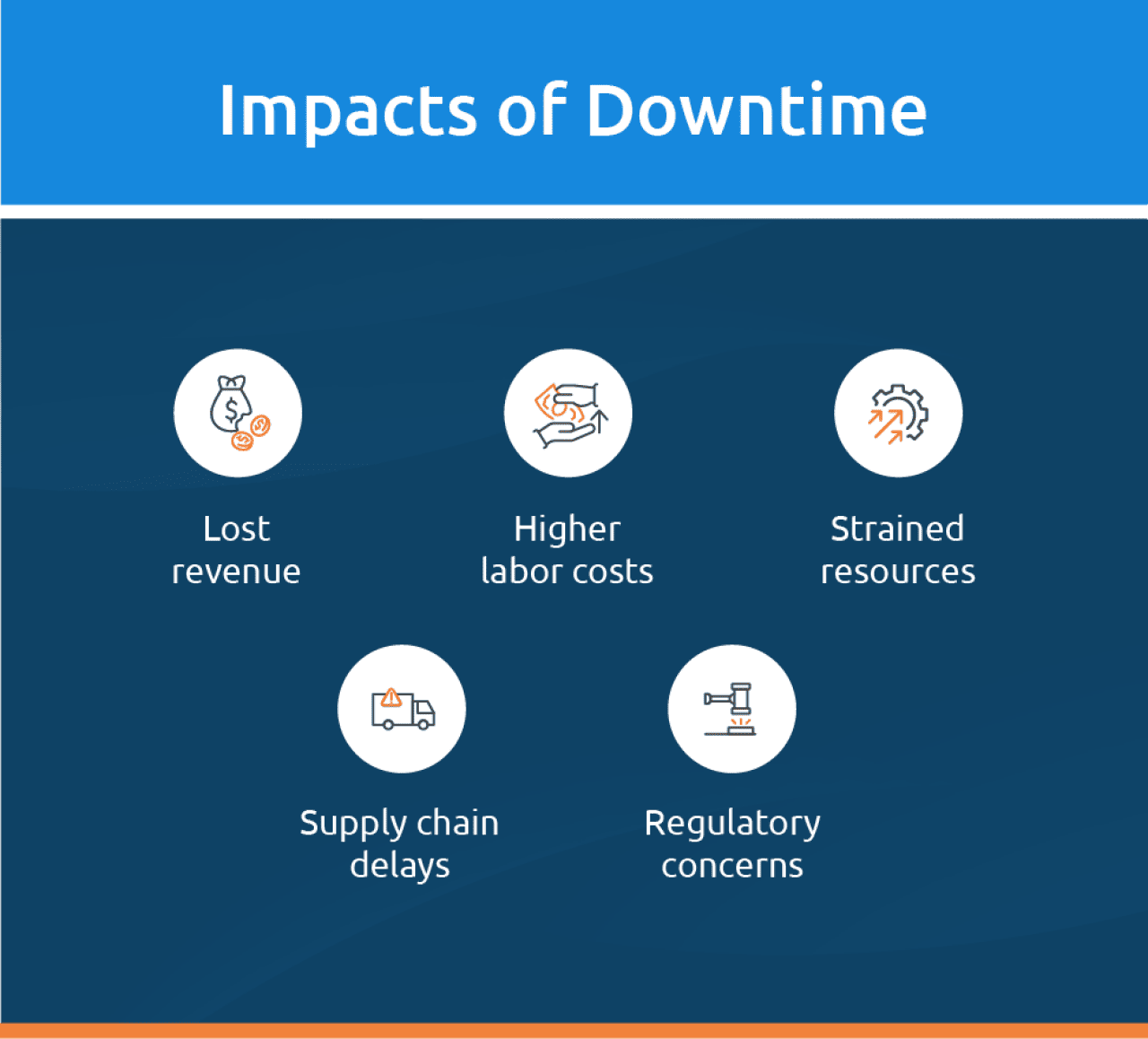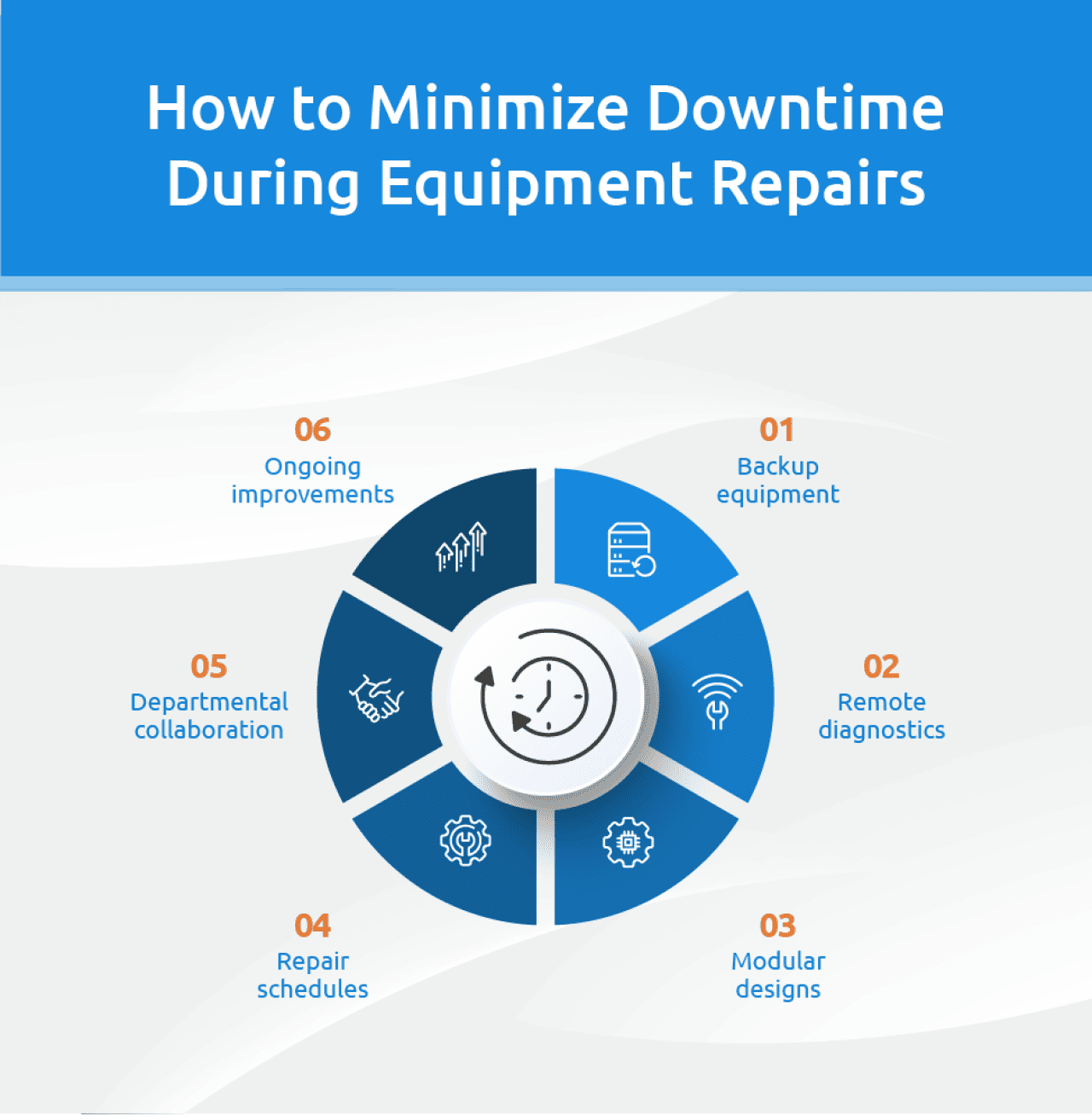In industrial environments, downtime threatens productivity. It occurs when machinery is not operational, halting production. Sometimes, downtime is unexpected. Other times, it’s planned for routine maintenance. Whatever the reason, outages can significantly impact your facility’s production, deadlines and safety.
Manufacturing operations can improve profits by minimizing outages. This guide from Global Electronic Services explores strategies for reducing downtime and improving long-term efficiency.
Downtime is caused by planned or unplanned events. Facilities schedule planned events like service, inspections and upgrades. The operation controls these tasks and helps prevent more extensive issues. Unplanned stoppage occurs when machinery fails unexpectedly. Without planning, this downtime interrupts your operations and requires immediate attention to minimize production issues.
Unplanned system shutdowns include events like:
Any downtime can lead to financial, logistical and operational issues. Stoppage by itself is expensive for your operation. Unplanned downtime is typical in manufacturing, costing an estimated $50 billion every year, according to Deloitte. Add in logistical delays and operational problems, and production can come to a standstill. Across the board, outages lead to production problems.

Preventing outages starts with proactive maintenance and inspection strategies. The Pacific Northwest National Laboratory reports that investing in preventive service programs can lead to financial savings of 12% to 18% on average. Well-defined care schedules help teams track system issues.
Create Maintenance Schedules
Detailed machine schedules make tracking and maintaining systems efficient. These schedules should outline regular service intervals, parts replacements and inspection routines. All critical systems will need scheduling and documentation. The more regular your servicing schedule, the easier it is to catch issues early.
Stock Spare Parts
Waiting for shipments during emergencies can increase downtime. Instead, stock critical and most commonly used components on-site. Use maintenance schedules and documentation to track part replacements and your biggest replacement weak spots. With a solid parts inventory, facilities can begin repairs immediately.
Cross-Train Employees
Operations will struggle to stop shutdowns if only a few team members can handle diagnostics or restoration. Training more employees in these fields can reduce wait times for specialized technicians during emergencies. Cross-train employees on safe diagnostics and service practices so you can get machines up and running until a technician can do a more detailed inspection.
Invest in Technology
Digital tools and analytics make finding problems easier. Computerized maintenance management systems (CMMS) track assets, automate service reminders and store repair data. Internet of Things-enabled sensors constantly record critical asset and performance data. Predictive analytics takes this information and environmental data and anticipates failures before they happen.
Backups, remote diagnostics and modular designs are some of the strategies facilities can use to reduce shutdowns. Even with tuneup schedules, issues happen. How efficiently teams can respond during stoppage directly impacts how quickly outages get resolved. With these strategies, your team can maintain continuity and limit downtime:

Documentation gives you a record of past repairs and concerns, making resolving issues faster. Updated maintenance logs and detailed service records provide technicians with a clear history of previous problems, part replacements and services. This information helps teams identify patterns in system behavior. With detailed records, they can find recurring concerns and speed up diagnosis.
Thorough documentation also prevents staff from trying ineffective fixes or overlooking previously resolved problems. If technicians have already investigated systems for a mechanical concern, they can turn to its electrical systems next time the issue arises.
Industrial facilities will use paper or digital tracking systems for documentation:
Operations also need detailed documentation when working with repair services. Third-party technicians need to get up to speed quickly. Good records let experts evaluate the problem and unit history faster, allowing them to recommend a solution.
Electronic components are critical for keeping modern machinery running. When these systems fail, facilities could see an immediate shutdown across the operation. Unlike mechanical issues, electronic asset failures require specialized tools and experience to resolve. Without the right tools and technicians, facilities could see unsafe working conditions and extended outages.
It’s common to see electrical failures like:
Without proper training, it’s difficult to detect these problems. If left unchecked, they’ll lead to erratic performance and unit shutdowns. It’s essential to have electronics repair capabilities or partners to resolve these issues safely. These services offer board-level diagnostics, component-level repairs and thorough testing to ensure equipment functions as intended.
The faster and better your electronic system servicing, the shorter your shutdowns. Choosing to fix systems instead of replacing them can reduce lead times. Legacy equipment is difficult to source parts for — repairs let operations get up and running faster. Additionally, fixes are often more cost-effective. You avoid rapid shipping fees, part sourcing expenses and the larger price tag of replacing an entire unit.
However, facilities should not repair all assets. Sometimes, equipment is too old, damaged or difficult to repair. When the servicing costs and safety hazards become too high, businesses should talk to providers about replacements. They’ll help evaluate unit effectiveness and reliability to ensure you get the right services for your facility’s needs.
Reducing downtime means evaluating key metrics like time to repair, time between failures and machine effectiveness. Data shows operational patterns and bottlenecks. When you can access metrics, you can see if they improve over time or if areas are falling behind. Make sure you’re using these metrics to guide your facility:
Compare your metrics to industry standards or internal data. If your data is outperforming historical records or industry standards, facilitators know their methods are working. If metrics are falling behind, an issue needs to be resolved somewhere. Digital dashboards can help with tracking this information, while third-party repair experts can offer new solutions to address an operation’s unique concerns.
Technology makes diagnostics faster and provides real-time performance monitoring. This data lets companies limit their stoppages and make repairs more precise. Investing in cutting-edge technology can create a more efficient operation. Consider these tools to support your downtime reduction efforts:
Reducing downtime is more than a maintenance issue — it’s a concern that directly impacts safety, productivity and a facility’s bottom line. Even short periods of unplanned shutdowns can lead to increased costs and missed deadlines for industrial and manufacturing operations. Investing in proactive planning, digital tools and reliable electronic repair services helps build a more resilient operation. Bringing everything together means creating a more efficient, effective process that keeps your productivity moving forward.
This story was produced by Global Electronic Services and reviewed and distributed by Stacker.
Reader Comments(0)